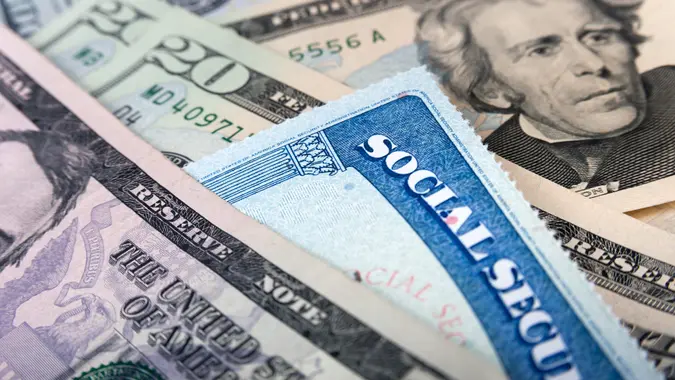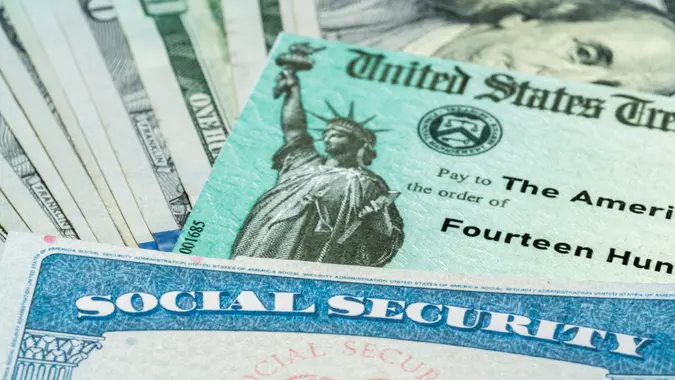5 States That Would Be Hit Hardest by a Low Social Security COLA Increase in 2025

Commitment to Our Readers
GOBankingRates' editorial team is committed to bringing you unbiased reviews and information. We use data-driven methodologies to evaluate financial products and services - our reviews and ratings are not influenced by advertisers. You can read more about our editorial guidelines and our products and services review methodology.

20 Years
Helping You Live Richer

Reviewed
by Experts

Trusted by
Millions of Readers
Although Social Security benefits typically increase every year based on the Social Security Administration’s cost-of-living adjustment (COLA), the COLA does not always keep up with inflation and/or the rising cost of living.
For one, the COLA formula is based just on the third quarter data for the Consumer Price Index for Urban Wage Earners and Clerical Workers (CPI-W), so some years, the COLA ends up being lower than the annual inflation rate.
As an analysis by The Senior Citizens League (TSCL) found, the COLA ended up being lower than the annual inflation rate in eight out of the past 15 years. Plus, seniors’ expenses don’t always align with the CPI-W. Overall, seniors have lost about 20% of their buying power since 2010, according to the TSCL.
In addition, the COLA is based on national data. However, state inflation rates don’t all follow the same path. Currently, the TSCL projects a 2.63% COLA increase for 2025. An increase like that, or perhaps an even lower one depending on how inflation plays out over the next few months, could hit recipients in the following states the hardest.
Florida
Florida’s inflation rate of 3.9% means that a low COLA could put seniors under pressure. The state has dealt with issues like rising home insurance costs, which can pose a challenge for seniors who find themselves unable to predict what their total housing costs will be.
Tennessee
Tennessee’s inflation rate of 3.8% might come as a surprise to some, but it has been one of the fastest-growing states in the nation, and that has led to cost increases in areas like housing. So, seniors who rent, for example, might face more pressure if the COLA increase is low.
Virginia
Virginia similarly has an inflation rate of 3.8%, which could make it difficult for Social Security recipients to keep up with rising costs. Some parts of Virginia have faced major challenges, like sharp rises in utility prices, which can be difficult for seniors living on fixed incomes to handle.
South Carolina
South Carolina’s inflation rate of 3.6% is also one of the highest in the nation. The latest Census data shows that South Carolina was the fastest-growing state in the country from mid-2022 to mid-2023, which can push up prices in some areas, particularly when housing supply doesn’t increase fast enough to meet the new demand.
In Charleston, for example, housing prices shot up by 17.5% over the past year, according to Redfin.
Alabama
Lastly, Alabama also has a 3.6% annual inflation rate, which could mean that a low COLA increase makes it hard for some seniors to keep up with rising costs in areas like utilities.
Meanwhile, residents may have been hoping for some tax relief on groceries after the state lowered its grocery tax from 4% to 3% in 2023. However, a provision that could have enabled the state to lower it by another 1% has not come to fruition and appears unlikely to change for now, according to the Alabama Reflector.
Note that the above data is based on Moody’s Analytics’ calculations of a three-month moving average of annual inflation rates as of February 2024, as reported by USA Today.
 Written by
Written by  Edited by
Edited by 
























